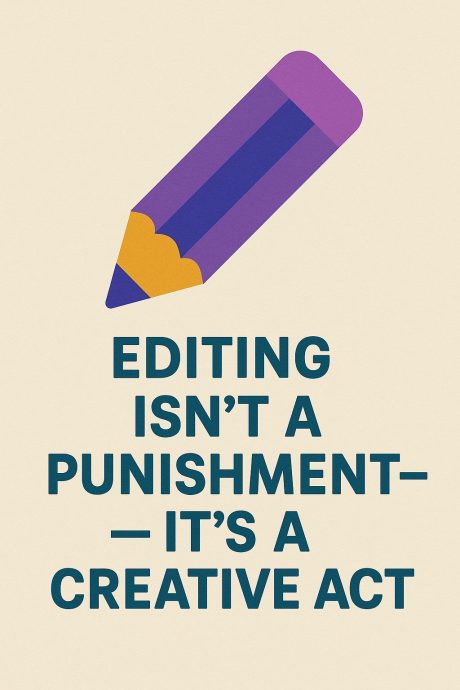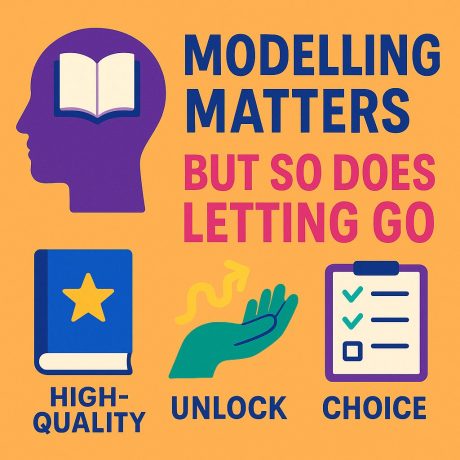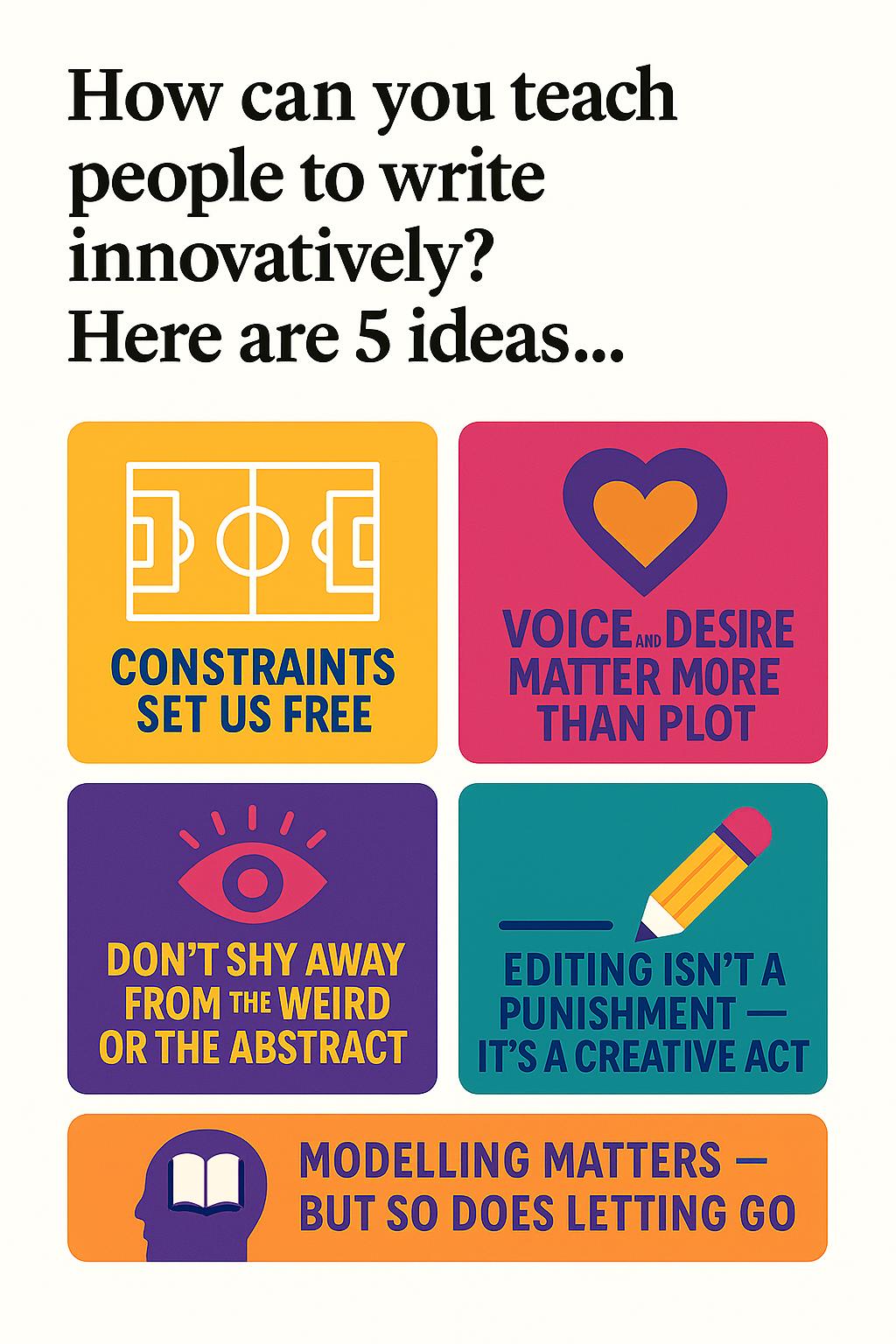
On 12 June 2025, Niall Bourke led a rich, warm and deeply practical Continous Professional Development (CPD) session for the MA Creative Writing and Education summer programme, exploring how to teach creative writing in ways that are emotionally engaging, structurally clear, and intellectually ambitious. The session was rooted in Niall’s experience as a published writer, experienced teacher, and curriculum innovator.
Drawing on model texts, classroom practice, and collaborative experimentation, Niall’s session exemplified what the accompanying CPD resource pack, which you can contact Niall for via his website, calls a “toolkit approach” — helping students build writing craft without becoming mechanical or formulaic. Below are five key takeaways from the session, enriched with quotes and links to wider resources.
1. Constraints Set Us Free

Niall repeatedly returned to a powerful image: that good creative writing teaching is like laying down the lines on a football pitch.
“Constraint is good. The football match only works because of the lines — not in spite of them.”
By giving students clear prompts, structured openings, or scaffolded story arcs, teachers can stop the dreaded “blank page panic” and help students build with purpose. A key activity drew on Leonie Ross’s story The Woman Who Lived in a Restaurant — using sentence starters and visual prompts to kickstart vivid, precise prose:
“One high day in [month], a [character] walked into a two-tier [setting]…”
This aligned with the CPD pack’s advice to offer students dip-in-and-out structures: not rigid templates, but flexible tools for control.
2. Voice and Desire Matter More Than Plot

“Hackneyed plots, lazy archetypes, clichés” — these are the traps students fall into when they focus on finishing a story rather than feeling it. Niall encouraged participants to go deeper than “what happens” — asking instead:
“What does your character want? What do they fear? What’s the tension, the yearning, the risk?”
In both the session and the CPD materials, there’s a focus on risk, emotion, and specificity. Students wrote about badgers at train stations, women waiting forever in cafés, and snowflakes dissolving into collective anonymity — all narratives unified by voice and emotional pull.
The CPD pack puts this clearly:
“We want: Ambition. Originality. Personal response. Risk-taking. Editing. Enough control to allow for execution.”
3. Don’t Shy Away from the Weird or the Abstract

One of the delights of the session was its embrace of strangeness. In model texts like Hugh Howey’s Wool and Jess Kidd’s Dirty Little Fishes, Niall invited students to explore metaphorical spaces, uncanny imagery, and indirect expression.
“You don’t need to give the backstory. In fact, nine times out of ten, the reader doesn’t want it. Show it through detail.”
This approach is also embedded in the CPD pack’s critique of formulaic approaches like SMILE for poetry:
“What happens when the poem resists interpretation? Acronyms fail. Instead, we need a mental toolkit — habits of risk, nuance, and sensory immersion.”
4. Editing Isn’t a Punishment — It’s a Creative Act

One of Niall’s most popular exercises was the £10 adjective rule: after writing a first draft, students were told to delete all adjectives and adverbs. They could then “buy back” three adjectives only — imagining each cost £10.
“They’ve often been told to write with as much description as possible. But this helps them value precision. You don’t need ten metaphors. You need the right one.”
This aligns with the CPD pack’s focus on editing as refinement and creative choice, not correction. As one student exemplar shows:
“The snow is white and gray, part and whole, infinitely various and infinitely repetitious, soft and hard, frozen and melting…”
…before the sentence is pruned to its essentials.
It’s not about removing meaning — it’s about revealing it.
5. Modelling Matters — But So Does Letting Go

Throughout the session, Niall modelled how to use high-quality texts — not to imitate, but to unlock. Ross, Kidd, Howey, Hofler, Barrett — these writers were brought in not as objects to be analysed, but voices to be listened to.
“Let the model do the emotional work. Then let the students shape their own response.”
The CPD pack recommends a menu approach — giving students choices and framing analysis as exploration rather than formula. Whether it’s character-building through setting, or structuring a story with contrasts and shifts in perspective, Niall’s method empowered teachers to co-create craft with their students, not dictate it.
Final Reflections
Niall’s session was a masterclass in mindful creative writing teaching: scaffolded, student-centred, and emotionally resonant. It avoided both over-instruction and under-guidance, offering instead what the CPD pack calls:
“A bespoke toolkit to suit individual needs… Normalise the struggle. Don’t teach mechanically.”
As the summer continues, MACWE participants can revisit these ideas through the blog, resource pack, and recording. Teaching creative writing isn’t about ticking boxes — it’s about creating conditions for risk, play, structure, and emotional truth.
If you’d like to learn more about Niall’s work or access his CPD materials, you can contact him directly via his website: niallbourkewriter.co.uk


Leave a Reply